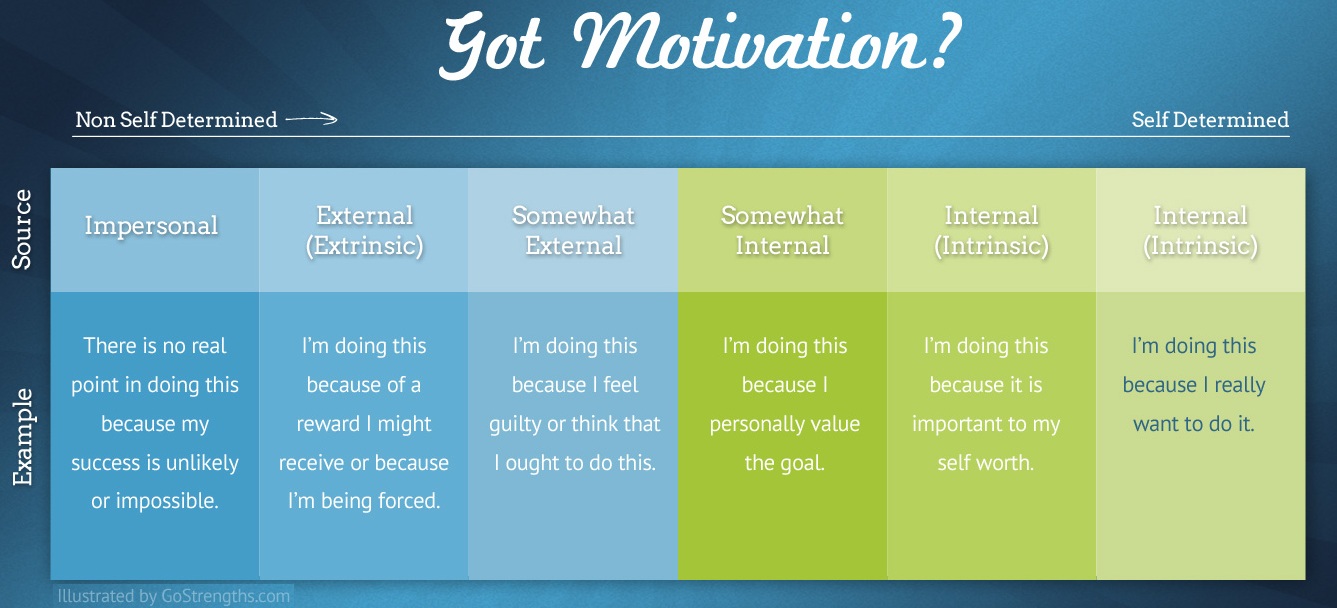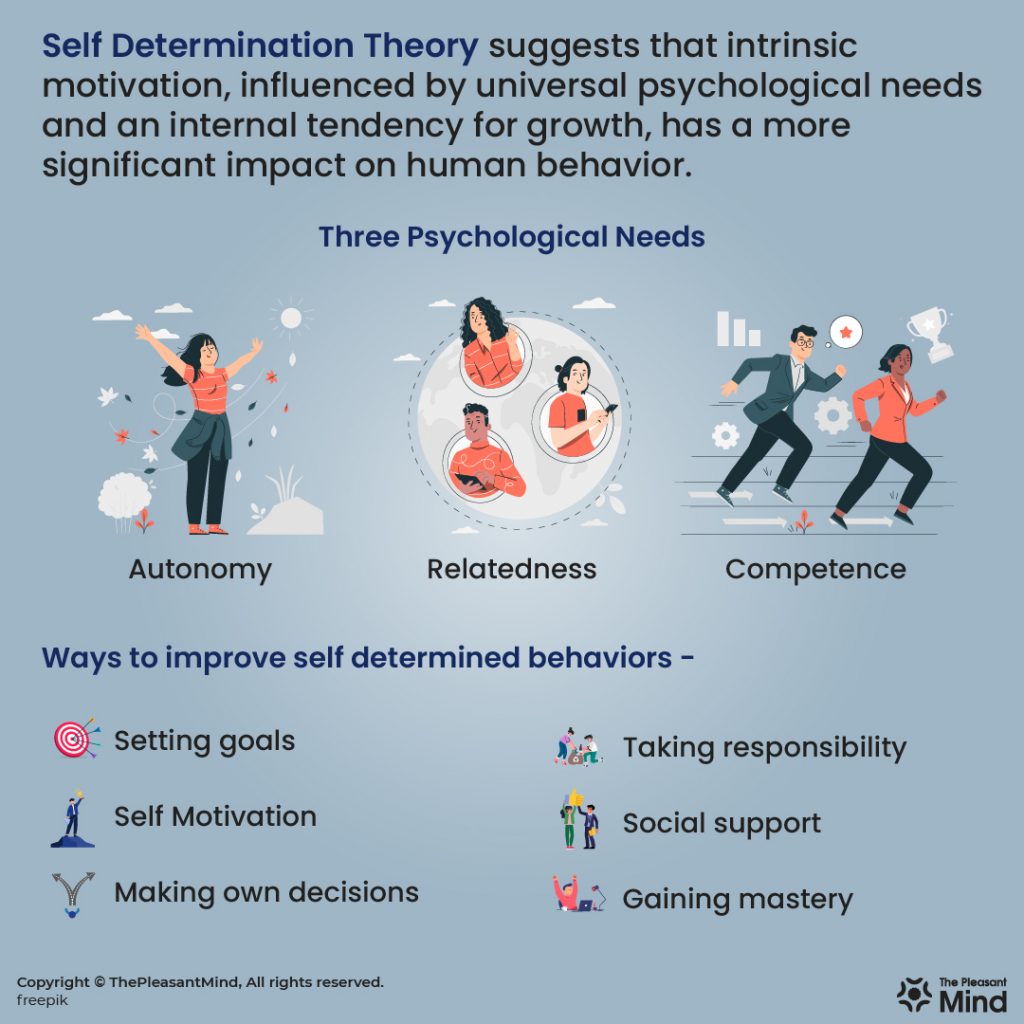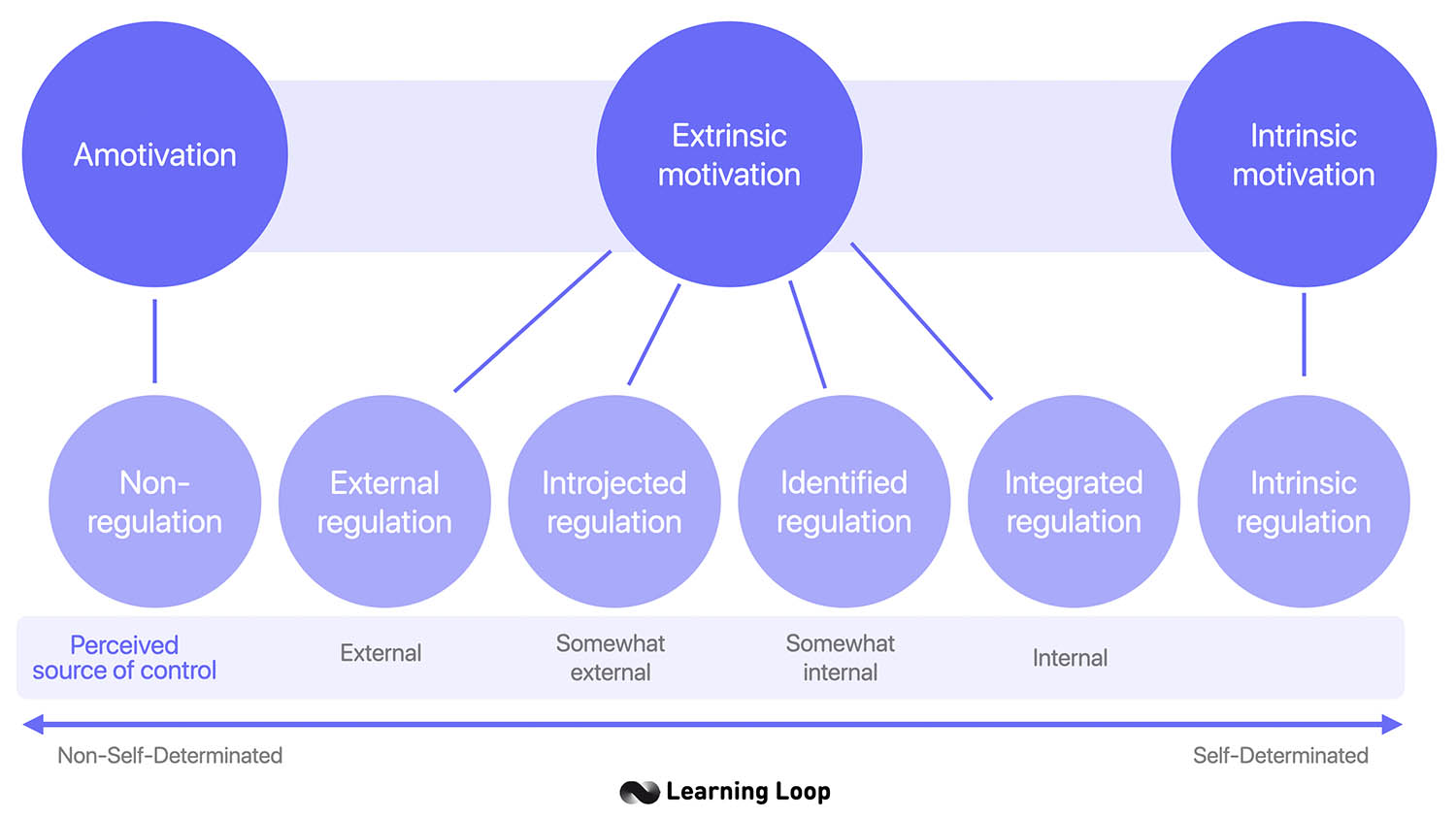Overview of Self-Determination Theory
Definition of Self-Determination Theory
Self-Determination Theory (SDT) is a psychological framework that emphasizes the importance of human motivation and personality development. At its core, SDT posits that people have innate psychological needs that, when fulfilled, foster optimal functioning and well-being. These needs are:
- Autonomy: The feeling of being in control of one’s actions and decisions.
- Competence: The need to effectively interact with one’s environment and achieve desired outcomes.
- Relatedness: The desire to connect with others and feel a sense of belonging.
The theory suggests that when these needs are met, people are more intrinsically motivated, resulting in better learning, personal growth, and greater life satisfaction.
Origins and Development of Self-Determination Theory
Self-Determination Theory was developed by psychologists Edward L. Deci and Richard M. Ryan in the 1970s. The origins of the theory can be traced back to their research on intrinsic and extrinsic motivation within educational settings.
- Initially, the researchers explored how external rewards could undermine intrinsic motivation.
- As their work progressed, they identified the three basic psychological needs that form the backbone of SDT.
Through years of empirical research and real-world applications, SDT has evolved to encompass various fields including education, health, and workplace settings.
For example, envision a classroom where students are encouraged to pursue projects that genuinely interest them. Collaborative learning boosts students’ autonomy and connections, enhancing their intrinsic motivation and improving engagement and knowledge retention.
Today, SDT continues to be a vital framework for understanding human motivation, shaping practices in education, work, and beyond. Its ongoing application highlights the importance of nurturing environments that support the fulfillment of individuals’ psychological needs.

Basic Psychological Needs
Autonomy: The Drive for Self-Endorsement
When we discuss Self-Determination Theory, the concept of autonomy stands out as a key component. Autonomy refers to an individual’s inherent desire to make choices and to feel in control of their own actions.
Reflect on a time when you could choose a project at work or a hobby that genuinely interested you. That sense of ownership often leads to higher motivation levels and satisfaction. Autonomy can be fostered through practices like:
- Allowing flexibility in decision-making.
- Encouraging self-directed learning.
- Prioritizing individual passions over mandated responsibilities.
This self-endorsement empowers individuals, creating a positive feedback loop that enhances overall engagement.
Competence: The Need for Mastery
Next, we turn to competence – the need for mastery that drives our engagement in activities. Everyone enjoys the feeling of success and accomplishment. When people perceive themselves as competent, they are more likely to take on challenges.
For instance, imagine a musician practicing tirelessly to perfect a song. Each time they master a difficult section, their motivation surges. In the context of SDT, competence can be developed by:
- Establishing realistic goals that push your skills to new heights.
- Providing constructive feedback.
- Celebrating small victories along the way.
Cultivating competence reinforces self-efficacy and fuels an ongoing passion for learning.
Relatedness: The Desire for Connection
Finally, relatedness encompasses our innate need to connect with others and feel a sense of belonging. Humans are inherently social beings, and fulfilling this need can significantly influence mental well-being.
A close-knit team working towards a common goal can create strong bonds that enhance motivation and performance. To enhance relatedness, consider:
- Building supportive communities.
- Encouraging open communication.
- Creating shared experiences through teamwork.
Feeling connected not only stimulates intrinsic motivation but also fosters resilience and a shared sense of purpose. By nurturing autonomy, competence, and relatedness, individuals are better equipped to engage fully in their lives, both personally and professionally.

Types of Motivation
Intrinsic Motivation: Internal Drive and Enjoyment
Having explored the basic psychological needs, it’s essential to delve into the different types of motivation that fuel our actions. Intrinsic motivation means doing something for the joy of it, driven by personal interest.
Consider a time when you took up a hobby, like painting or gardening, just for the joy of it, without any outside pressure or expectation of reward. This type of motivation can lead to:
- Increased creativity and exploration.
- Greater persistence in the face of challenges.
- Enhanced satisfaction and well-being.
Students who are intrinsically motivated by a subject are more likely to engage deeply and succeed because of their genuine interest.
Extrinsic Motivation: External Rewards and Punishments
In contrast, extrinsic motivation involves engaging in an activity for external rewards or to avoid punishments. This could manifest in various aspects of life, such as work or academics.
For instance, an employee might push themselves to meet deadlines and exceed targets primarily for a bonus or a promotion. Some key characteristics of extrinsic motivation include:
- Rewards like money, grades, or recognition.
- The fear of negative outcomes, such as reprimands or job loss.
- Compliance with external expectations.
Extrinsic motivation can be effective, but relying solely on it may undermine intrinsic motivation and long-term satisfaction.
Amotivation: Lack of Motivation and Interest
Lastly, amotivation represents a state of lacking any motivation or interest. Individuals may feel indifferent or disengaged due to various factors such as:
- A perceived lack of competence.
- Unclear goals or values.
- Prior negative experiences.
Think of a student who feels overwhelmed by their classes and questions the relevance of their education. This sense of disconnection can lead to:
- Withdrawal from activities.
- Decreased academic or work performance.
- Diminished overall well-being.
Understanding these types of motivation—intrinsic, extrinsic, and amotivation—provides valuable insights into human behavior. By fostering intrinsic motivation while using extrinsic rewards wisely, individuals can harness their drive for more fulfilling and meaningful experiences.

Self-Determination in Personal Growth
Applying Self-Determination Theory to Goal Setting
Understanding motivation types is key to using Self-Determination Theory (SDT) for personal growth, especially in goal setting. Individuals are more likely to achieve their goals and feel fulfilled when those goals are self-directed and aligned with their intrinsic values.
Instead of aiming to “lose 10 pounds” for summer, focus on an intrinsic goal like “adopting a healthy lifestyle I enjoy.” This shift can lead to:
- Increased ownership and commitment.
- Enhanced satisfaction in the journey rather than just the outcome.
- A better chance of maintaining the habits long-term.
Incorporating the three basic psychological needs—autonomy, competence, and relatedness—into goal setting can further turbocharge this process. Make sure that the goals reflect personal values, offer opportunities for mastery, and include elements that foster connection with others.
Fostering Intrinsic Motivation for Long-Term Growth
Building intrinsic motivation is a key aspect of sustainable personal growth. People who engage in activities driven by intrinsic motivation are often more persistent and resilient, especially when faced with obstacles.
To foster this intrinsic motivation, consider:
- Creating enjoyable experiences: Engage in activities that you find fun or stimulating; this helps develop a positive association.
- Cultivating a growth mindset: Embrace challenges and view setbacks as opportunities to learn rather than failures.
- Seeking feedback and reflection: Regularly assess your progress and celebrate achievements, no matter how small.
After your first 5K, focus on the joy of crossing the finish line with friends and fellow runners, rather than just the time. This focus on positive experiences not only enhances intrinsic motivation but also promotes long-term growth.
Integrating Self-Determination Theory in personal goal setting can enhance intrinsic motivation, leading individuals to transformative and rewarding journeys.

Self-Determination in Education and Work
Implications for Teaching and Learning
Self-Determination Theory (SDT) provides useful insights as we shift from personal growth to education and work. In the realm of education, applying SDT can revolutionize teaching and learning environments.
Teachers can create classroom experiences that nurture the three basic psychological needs—autonomy, competence, and relatedness. Educators could let students choose projects based on their interests instead of sticking to a strict curriculum. This strategy can lead to:
- Enhanced engagement and participation.
- Improved academic performance.
- Increased self-esteem and confidence in students.
Think about a classroom where students are invited to explore topics related to current events. This approach not only keeps them informed but also fosters critical thinking and discussion among peers. When students feel ownership of their learning, they become more invested in their educational journeys.
Motivating Employees and Enhancing Productivity
Similarly, in the workplace, the application of Self-Determination Theory can significantly boost employee motivation and productivity. Employers who understand the importance of nurturing autonomy, competence, and relatedness are better equipped to create a positive organizational culture.
For instance, consider a company that encourages employees to set their own performance goals. This practice can lead to:
- Greater job satisfaction and retention rates.
- Enhanced creativity and innovation.
- Improved collaboration among teams.
In a recent experience, a manager decided to shift focus from top-down directives to collaborative goal setting. Employees were given the freedom to choose projects aligned with their strengths, fostering a sense of ownership. The result? An upswing in morale and a notable increase in overall productivity.
By adopting the tenets of Self-Determination Theory, both educators and employers can create supportive environments that empower individuals to thrive. This enhances engagement and supports personal and professional growth, leading to happier and more productive lives.
Applying Self-Determination Theory in Daily Life
Strategies for Enhancing Autonomy, Competence, and Relatedness
Next, we should apply the principles of self-determination from education and work to our daily lives. Enhancing the three psychological needs—autonomy, competence, and relatedness—can lead to a richer, more fulfilling experience.
To enhance autonomy, consider these strategies:
- Set personal goals: Create objectives that resonate with your values and interests. Instead of relying on external expectations, strive for goals that reflect your passions.
- Make choices: In daily activities, such as meal prep or weekend plans, prioritize options that feel genuine to you.
For competence, focus on skill-building and mastery:
- Embrace challenges: Take on tasks that stretch your abilities. Whether it’s learning a new language or tackling a DIY project, pushing your limits fosters a sense of achievement.
- Seek feedback: Engage with trusted individuals for constructive feedback, helping you refine your skills and boost confidence.
To cultivate relatedness, invest in your relationships:
- Nurture connections: Regularly reach out to friends and family. Simple gestures, like sending a text or planning a get-together, can strengthen bonds.
- Participate in group activities: Joining clubs, volunteering, or attending workshops can help you meet new people and foster connections.
Cultivating a Self-Determined Mindset for Success
Alongside these strategies, cultivating a self-determined mindset is crucial for long-term success. This mindset is rooted in taking ownership of your choices and embracing personal responsibility.
To develop this mindset:
- Practice self-reflection: Regularly assess your motivations and thought patterns. Journaling can be a powerful way to understand your internal drivers.
- Affirm your choices: Whenever you make a decision, remind yourself why it aligns with your goals and values. This practice reinforces autonomy and commitment.
If you choose a new hobby, think about why it excites you and how it adds to your happiness. Acknowledging your motivations creates a sense of empowerment.
Incorporating these self-determination strategies into daily life not only enhances personal growth but creates an environment ripe for success. When individuals actively nurture their autonomy, competence, and relatedness, they pave the way for a more fulfilling and engaged life.
For More Information
Check out my AI-generated podcast on SDT here:




